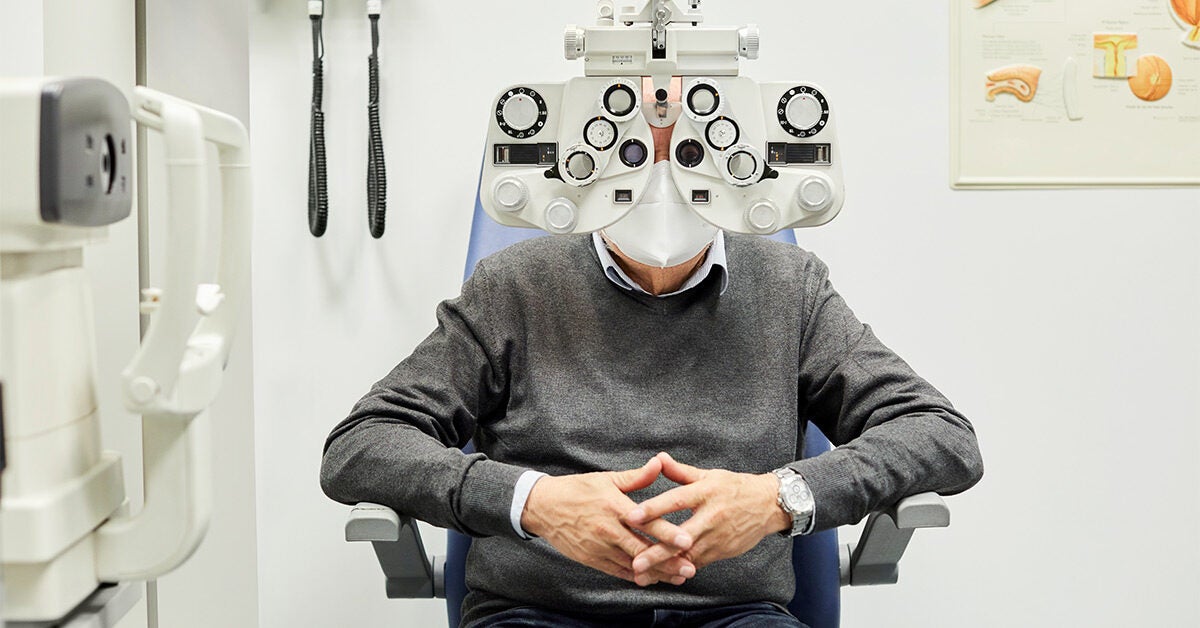

- A new study finds that people with severe COVID-19 may be at risk for certain eye abnormalities.
- COVID-19 has been linked to cases of conjunctivitis, but it is the first time researchers have noticed nodules in the back of patients ’eyes.
- Experts say the viral infection can affect blood vessels, which could cause nodules.
According to a study published today in the medical journal Radiology, new research shows that patients with severe COVID-19 may be at risk for certain eye abnormalities.
The study, initiated by the French Society of Neuroradiology, used MRI scans to find significant abnormalities in the eyes of some people with severe COVID-19.
129 patients were examined, all of whom underwent brain MRI. Of the 129 patients, 9 (7%) had magnetic resonance imaging abnormalities of the eyeball. Eight of these patients had spent time in the ICU for COVID-19. Scans revealed one or more nodules in the back of the eye.
COVID-19 has been linked to cases of conjunctivitis, but it is the first time researchers have noticed significant abnormalities. In this case, the nodules on the back of the patients eyes.
The researcher’s theory is that nodules could be related to inflammation triggered by the virus and inadequate drainage of the veins around the eyes because patients remained in a prone position for a significant time.
Seven of the nine patients with nodules had spent time in an ICU-prone position or were intubated.
Of the nine patients, many also had underlying conditions. Two had diabetes, six had obesity and two had hypertension.
These conditions and staying in the ICU can affect eye health.
For people hospitalized with COVID-19, simply being in bed can be a risk. Staying in supine position for an extended period of time could affect the drainage of these blood vessels.
Dr. Claudia FE Kirsch, head of the neuroradiology division at Northwell Health in New York, said the infection could also trigger a response that can begin to damage the eye.
“When you have a virus entering the bloodstream, the blood vessels block, causing an inflammatory response that could affect the eye socket,” Kirsch explained.
As with other potentially recently discovered side effects of COVID-19, long-term risks are still being assessed. Because such a small sample group has been studied, more testing is needed to determine long-term risks.
There may be many other patients with severe COVID-19 who have these nodules. Because the approach was to keep their vital features under control in the ICU, these patients were not subjected to these other precise tests.
“When these patients come in they are very sick. The goal is to keep them alive. At the ICU, we focus on keeping them able to breathe, ”Kirsch said, explaining why these nodules may not have been previously captured.
He also pointed out that it is possible for nodules to form in other parts of the body, but doctors do not know how to analyze them.
One of the reasons to consider eye nodules is that they could lead to blindness if left untreated.
“The first goal is to get patients to breathe on their own and reduce the viral load,” Kirsch said. “Prevention would be ideal because patients do not contract the disease at all. Hand washing and all the basics are also important, but we are still learning what is in sight. ”
The study suggests that ocular detection should be considered in all patients with severe COVID-19. Projections may include an MRI and fundoscopy, which use a magnifying glass and a light to check the back of the eye.
Doctors are still discovering and learning about this possible side effect. The virus mainly attacks the lungs, but has previously been linked to eye abnormalities such as conjunctivitis.
However, ocular abnormalities have not yet been studied with respect to COVID-19.
“We haven’t seen many complications of COVID-19 from an ocular point of view,” said Dr. Mark Fromer, an ophthalmologist at Lenox Hill Hospital in New York City.
“We have seen some conjunctivitis associated with COVID-19, but in general it has cleared itself without intervention. It is quite easy to check the back of the eye without an MRI, ”he said. “It makes sense what the study suggests, which is an eye exam where the pupil dilates and the macula can be checked with a magnifying glass.”